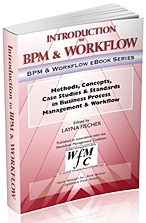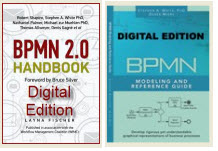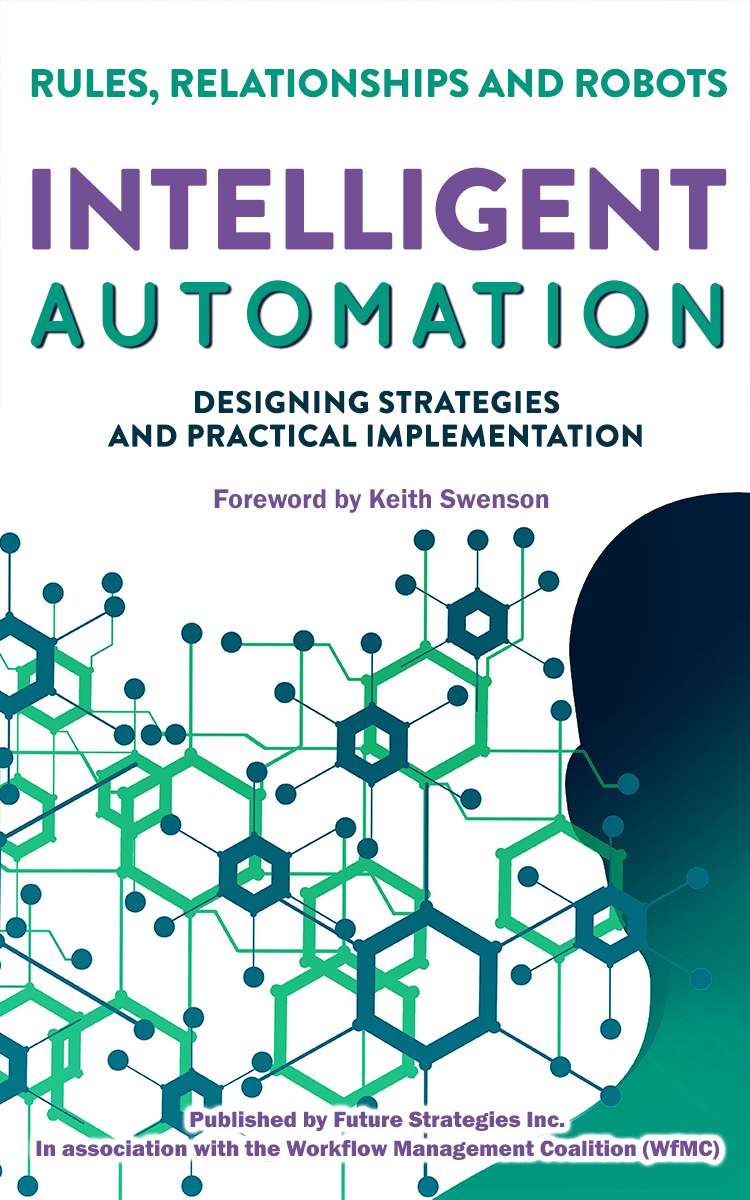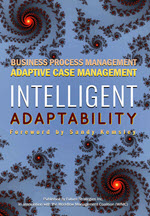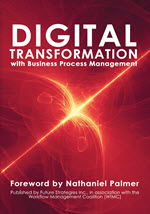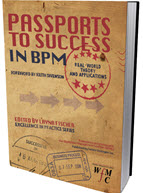| Home Free Chapters Browse Book Store Industry Blog Contact Us | |
|
Introduction to BPM and Workflow View Larger Image
Best BPMN Books Bundle
|
BPM and Workflow eBook SerieseBooks in this series... * Introduction to BPM and Workflow Introduction to BPM and WorkflowSize: 3 MB zipped PDF Table of ContentsThis new eBook presents the collection of best and most important chapters on this topic recently published in the annual BPM and Workflow Handbook series and other publications. BPM's promises are real, but the path to success is littered with pitfalls and shortcuts to failure. If you are just embarking on using its methods and tools, these authors have a wealth of experience to learn from and build on. Whether you are a business manager or an Information Technology practitioner, this special collection of papers will provide valuable information about what BPM can do for you—and how to apply it. Published in association with WfMC.org Workflow in the World of BPM; Are They the Same?Charlie Plesums, WfMC Fellow, United StatesThis introductory chapter describes how workflow management systems are no longer just a simple inventory of work to be processed, or a simple routing system, but have become sophisticated process management tools. System tools have emerged to help analyze and design complex new business processes. Other tools, the invocation engines, run the process as defined. Specifically these engines invoke transactions on systems both internally and across many organizations—suppliers, partners, and customers. Business Process Management—BPM—is born. Implementing Your First BPM Project: Tips and PitfallsKarl Djemal, Citi, United StatesUnderstanding what BPM really means to an organization can be a huge challenge and then you need to familiarize yourself with the products that you will use and apply them correctly. Keeping it Simple in the Complex World of BPMAmit Rajaram, HSBC Group, IndiaToo many vendors, too little value; this feeling of frustration frequently sums up the attitude for many organizations that jumped onto the BPM bandwagon with the aim of transforming their businesses. I have been through the experience of implementing a BPM solution a few times and learned several valuable lessons along the way. For the benefit of other IT users I am happy to share the knowledge gained. Essentially this paper is a how-to approach for those looking at implementing BPM for the first time. The Business Value of Workflow and BPMKeith D. Swenson, Fujitsu Computer Systems, United StatesHuman-Oriented Business Process Management, also called Workflow, is a critical component that allows applications to meet the agility demands of business. Service-Oriented Architecture (SOA) is an important design goal to meet the agility demands of Information Technology (IT). IT and business users are different audiences, with very different demands, and failure to recognize this can lead to missed opportunities and unsatisfactory solutions. BPM in Context: Now and in the FutureJon Pyke, WfMC Chair, United KingdomThis paper looks at the various technologies that make up the burgeoning Business Process Management (BPM) market and explores the impact that new methods of deployment and design will have on products and how those changes could affect end users. The paper also provides non-technical readers with a better understanding of what the all-encompassing term “Business Process Management” means by explaining several BPM-related terms in detail. The Keys to BPM Project SuccessDerek Miers, Enix Consulting Ltd., United KingdomThis paper focuses on the best practices associated with Business Process Management (BPM) project success. It describes a recipe for success, from the creation of a governance-oriented Steering Group, Project Selection, through Business Case Development and on to gaining Executive Sponsorship. With business commitment to the project, the approach focuses on gaining a deep understanding of business processes, before identifying improvement opportunities and eventual implementation on a BPM Suite. Along the way, the paper highlights a wide range of best practice approaches and pitfalls to avoid. Engagement Transforms Processes, Inside and Outside the EnterpriseRaja Hammoud, Adobe Systems Incorporated, United StatesAs more and more businesses are discovering, even small improvements in streamlining and managing business processes can have disproportionately large impacts on the efficiency and competitiveness of a company. Smart approaches to Business Process Management (BPM) thus affect a company’s bottom line and can deliver excellent returns. Many process automation projects, however, fail to deliver the anticipated ROI results due to the inability to drive customers, partners, and employees to engage with these processes and adopt them. This paper reviews why employees, partners, and customers effectively engaging with a process at every stage is critical to gaining the promised benefits of BPM. BPM—Too Much BP, Not Enough of the MDerek Miers, Enix Consulting, United KingdomThe problem with many BPM deployments is that they often overlook the reason why this technology is needed in the first place—to support the achievement of business objectives. The re-emergence of business processes as a core discipline in modern business management is fairly clear. But in order to really derive the maximum benefit from BPM initiatives, firms need to manage the people interface more carefully. Practical Lessons in Managing Real BPM InnovationFred van Leeuwen, DCE Consultants, NetherlandsCompanies are paying lip service to the most essential prerequisites for innovation of work. After 15 years of process engineering, many of them are still not ready to cut across their functional silos. And they rarely initiate the innovation process from within the hearts of their process workers, without whom it will not happen. The author responds to the question, “Why has the idea of real-time steering information, placed in the hands of process workers, not materialized as quickly and fully as it could have, and what can we do to make it more successful?” Knowledge Intensive BPMJon Pyke, The Process Factory Ltd., UKMany of us involved in the field of Workflow Automation and Business Process Management (BPM) have argued long and hard about where these two technologies overlap, where they are different, which mathematical models to use, which standards are applicable to which part of the technology stack and all that associated puff. BPM Center of Excellence ManifestoDr. Setrag Khoshafian, Pegasystems Inc., USAAs BPM becomes more and more pervasive, it is imperative for both large as well as mid-sized enterprises to establish a BPM Center of Excellence (COE) that focuses on the deployment of successful BPM projects. The COE has many functions. The iterative COE methodology identifies the participants, artifacts, and phases of BPM projects. The COE governance of BPM projects identifies the policies for roles, standards, decision making, and deliverables that target BPM applications. The COE also attempts to provide the guidelines and models for building reusable corporate assets captured in process and policy models. Building a Scalable and Sustainable BPM Center of ExcellenceClay Richardson, WfMC Public Sector, USA and David Atwood, Bermuda Government, BermudaIn most organizations, the BPM Center of Excellence (BPM CoE) serves as the program office for coordinating, prioritizing, and implementing mission-critical BPM projects across the enterprise. In addition, the BPM CoE provides basic governance guidelines for analyzing, implementing, and improving internal business processes. The need for establishing a centralized BPM program office grew out of political conflicts that were encountered as processes were automated across various departmental and system boundaries. As organizations began to roll out numerous enterprise-wide BPM solutions, they found it effective to consolidate key roles, best practices, and toolsets into a single BPM CoE.
|
Business Transformation Series
~ Business and Dynamic Change  Retail $49.95
____________________ Could your case study be an Award-winner? Get recognition for your visions and your team's achievments.
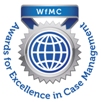
WfMC Awards for Excellence in Case Management
|

